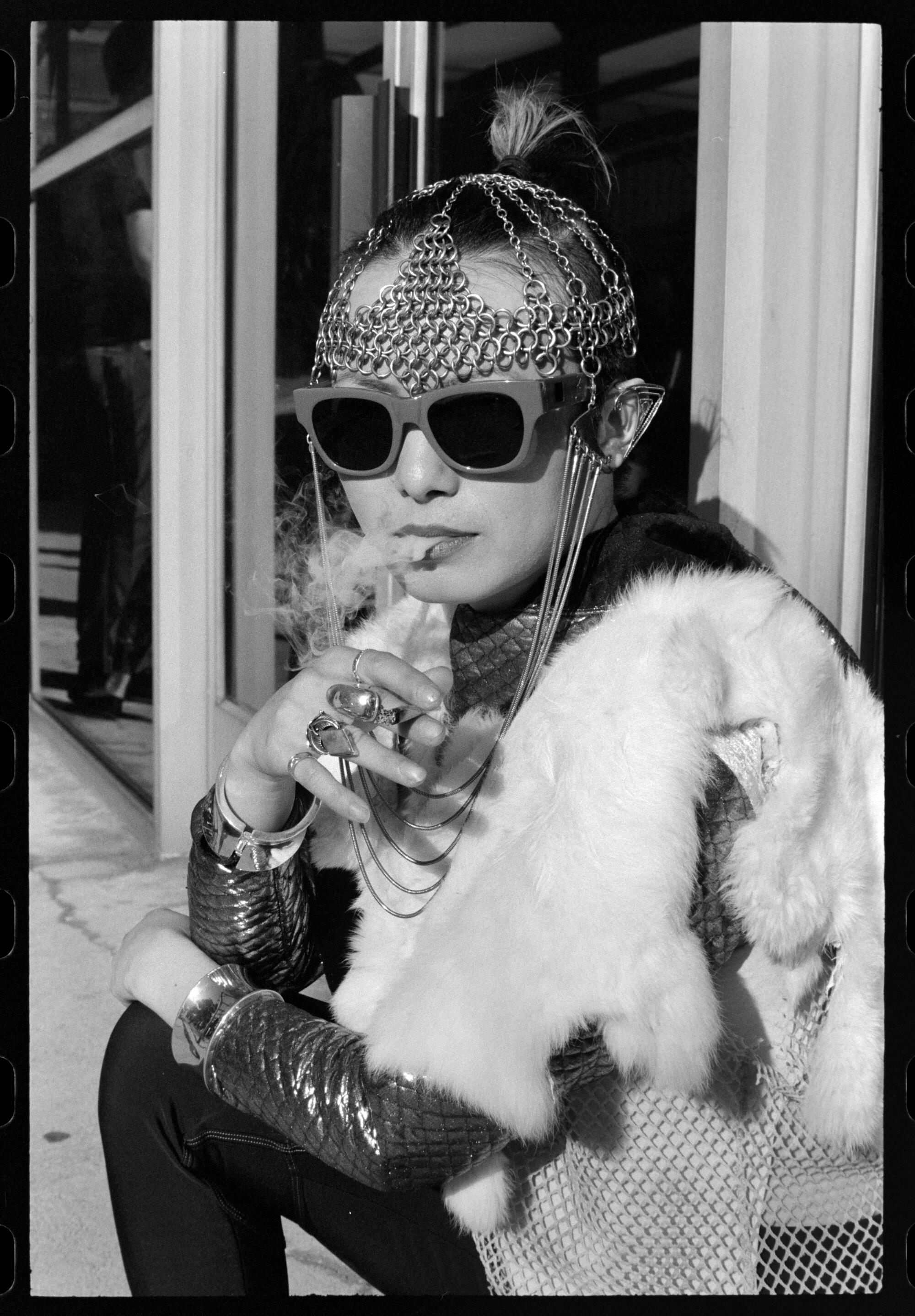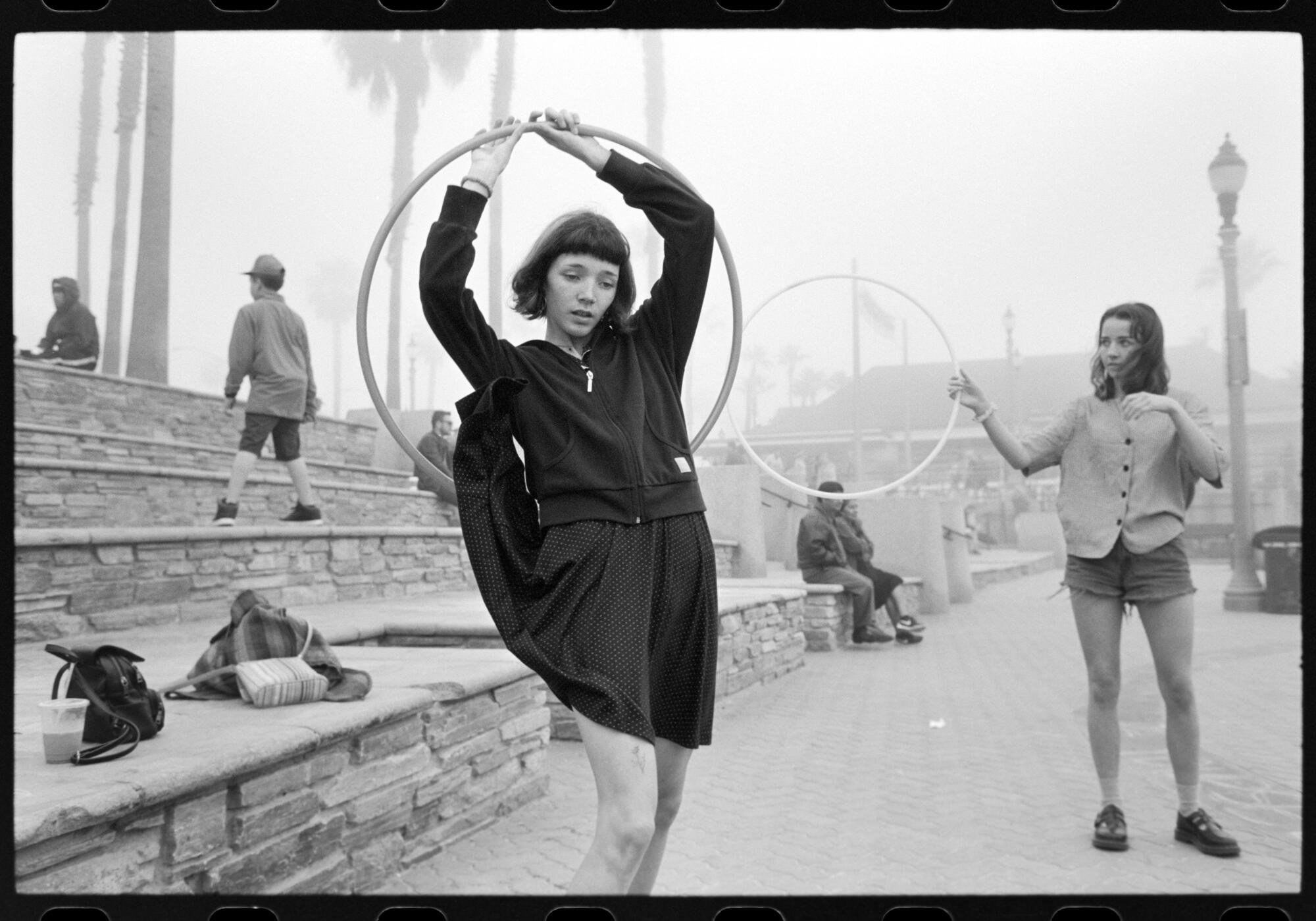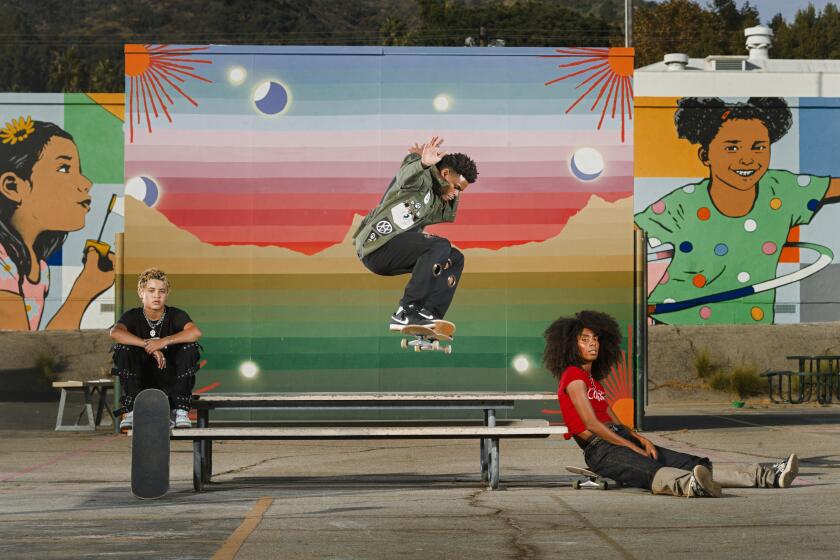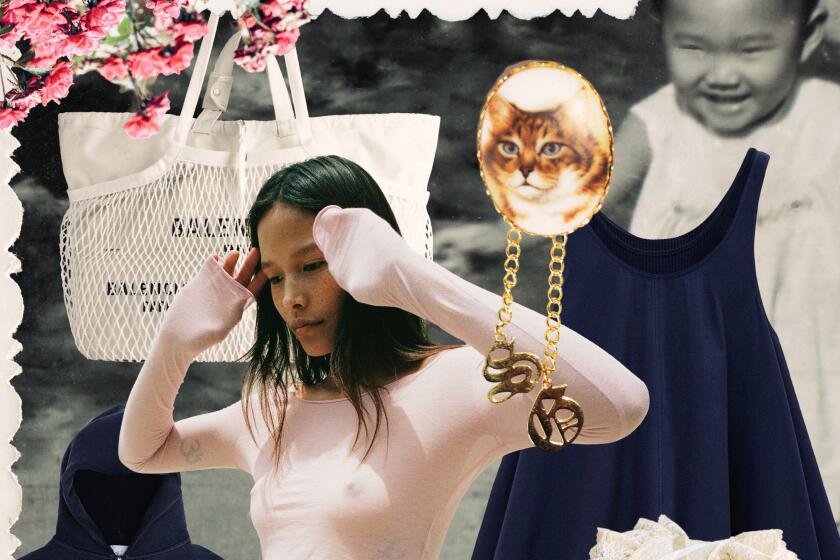
- Share via
This story is part of Image’s August issue, Lineage, about intergenerational conversations and how they shape us.
I turned pro in 1990. I was 18 years old, and I was immediately swept into this incredible world of skateboarding — pro skateboarders, all of them young and living hard and fast lives. What kills me is that this didn’t set into me, photographically speaking, until 1994, when I realized: Look at this life I get to live. I had been painting, but I wasn’t as clued into photography yet. I came across a bunch of influential photo books at around that time — ’94, ’93 — and just had an epiphany that I should be documenting this. Like, who gets this access? I mean, I’m the ultimate Insider. I’m a pro skateboarder who wants to document skateboarders.
I wasn’t doing drugs or drinking, really, so I was always a little bit of the oddball in the group. I’m literally with these people [with a] live-fast-die-young attitude, and so there was a remove there. Seeing these photo books, “Teenage Lust” by Larry Clark and “The Ballad of Sexual Dependency” by Nan Goldin, were two great examples of: You can shoot your own scene, your group of friends. I see these guys acting like rock stars and there’s a comedy to it, in some ways. The way they [wore] their fame was really interesting. Once I started looking at it from that perspective, it just became totally fascinating. I was also with [wife and fellow artist and photographer Deanna Templeton] since I was 15 years old, so, for me … I almost felt like a babysitter sometimes. Babysitting this group of wild kids. It gave me that perspective to shoot it, to document it in that way. It wasn’t just about fetishizing skateboarders or skateboarding. It was a critical eye. I’m laughing at myself too. I wanted to focus on things that told that story.
The schoolyard is where artists on wheels come together to make work and support each other. It’s a physical testament to the communal ethos of the city’s art scene.
I’m a shoot-first, ask-questions-later type of photographer. If I see something that even interests me a little bit, I’m jumping in, trying to shoot it. Photography has always been about hardcore looking, seeing and observing. Looking for those little things that speak to wider things that happened in the streets. How people dress, what people are doing, [tells] a bigger story. Once I picked up a camera, everything was fair game. I literally became a street photographer overnight because I was just carrying a camera around. We were traveling, so I’d be shooting in Paris streets, wherever we were. Getting to travel so much gave me a great perspective coming back to suburbia and realizing how weird this place was. All of my work lately, especially in painting, has been dealing with suburbia, dealing with the fact that I live in this weird place.
Deanna and I go down to the [Huntington Beach Pier] all the time. Less since the pandemic, but for the last 15 years we’ve been doing daily pier walks. Huntington Beach is a little like Venice-light. There’s a lot of crazies, a lot of religious zealots and Trumpers. Everyone who wants to be seen. There’s always some weird energy down there. Shooting at the Huntington Beach Pier has been super eye-opening — you don’t have to travel to some exotic place to make photography. You can shoot in your own backyard, and make interesting stories because humans are humans everywhere. Suburbia is the same as everywhere else, it’s just encased in a facade. There’s a white picket fence and a nice house, but there are still racists and wife-beaters. All the things that happen in society are happening here, just swept under the rug a little bit more. That’s an interesting subject in itself.
I was actually up on the pier and saw [the girls in the bikini T-shirts] from the pier. It’s really hard for me to go up and approach people … it’s scary for me. But I saw them, and you could tell they were having fun. They definitely just bought those [shirts]. I think they had music on and [were] just dancing around on their towels. I feel like I could approach these girls and they’re probably not going to be weirded out because they are clearly having fun and that gives me an in. [I] trudged over the sand, got to them, and I was just like, “Can I shoot a photo?” And they were totally down. They were like, “Here’s our phones, get some photos of us with our camera.” It was just one of those quick interactions. I probably shot three photos and tried to get them not to pose because they were posing a little bit.
From Loewe’s breezy silk minidress to ERL’s rugged zip-up hoodie, these items bring out the joyful and youthful.
The “Teenage Smokers” series that I did started at the skate park here in Huntington Beach. Every day after school, the kids, the ne’er-do-wells, would come to the skate park and smoke at their little spot. It just happened right in front of me. And as that person who was looking at everything [as] a little bit of an outsider, I was like, “What a cool scene.” I brought a Polaroid camera, went in, and started asking kids for Polaroids smoking. Then I started shooting it with a film camera everywhere. I would be doing a [skate] demo in Helsinki, Finland, and there’d be these young kids smoking. These things happened organically.

[For “Girl Smoking,” I was at the L.A. Art Book Fair]. I’d come outside and was talking to someone, and that girl came out to smoke. She obviously was dressed incredibly with head jewelry. Usually if people have something incredible on, they know why you’re shooting photos, so I feel a little more licensed to go up and shoot a photo. I went up and shot one without asking her and then the funny part about it [is] she was like, “Ed? What’s up, Ed?” It was an in from being known as a photographer or skater, wherever she knew me from, so I was able to shoot a couple more.
I’ve had a unique experience with access based on the fact that I was a pro skateboarder. That’s probably the biggest benefit I had — being a skateboarder makes you young too. So even if I was 40, the fact that I was skating around, it was disarming for younger people. In general, it’s a little tougher now. Going to shoot at the beach for instance, there’s no escaping [that] I’m a 50-year-old man [with a] gray beard. I’m removed enough from my pro days now where I’m starting to meet skater kids who are just like, “Who are you?” Which seems crazy to me because I’ve had such a long life being so embraced by the skate world, but it makes sense … because I’m not in the magazines anymore. I’m behind the scenes. That’s kind of interesting to have that transition.

The movement I captured [in “Hula Hoop Girl”] [is] to me like a Renaissance painting. It was one of those amazing foggy days down here. Everything’s hazy and weird. There’s a photo of her in Deanna’s book, “What She Said,” as well. There’s always Hula-Hoop girls out there, but they’re usually in biker shorts or a bikini. This was a girl in a dress. You can tell she was a little on the goth-y side. We’re like, “Oh, this girl is incredible.” These artsy goth girls, Hula-Hooping down here at the beach.
We all live through that awkward period as teenagers. That feeling of figuring out the world and all the first moves you make — trying to meet a girl or going through puberty. I’ve always thought it was visually a rich place to look at. When you see a photo of a kid, to me, it’s that shared experience. If you’re able to capture that awkwardness, you immediately just get that feeling of, wow. When you’re that age, you’re just trying on stuff. The fashions that you did, it’s guaranteed that this person’s gonna grow up in 10 years and look back at the photos of them now and cringe, and it’s just amazing. It’s interesting and tragic and weird and awkward and just fun. We can all recognize a nugget of truth in this thing and laugh at it, because photography is that. I’m sure someone more known and famous than me said this, but I remember reading somewhere that photography in a nutshell is just the toddler pointing [to something] for his mom.

As told to Julissa James.
Ed Templeton is a painter, photographer and former professional skateboarder who runs Toy Machine Bloodsucking Skateboard Company.





